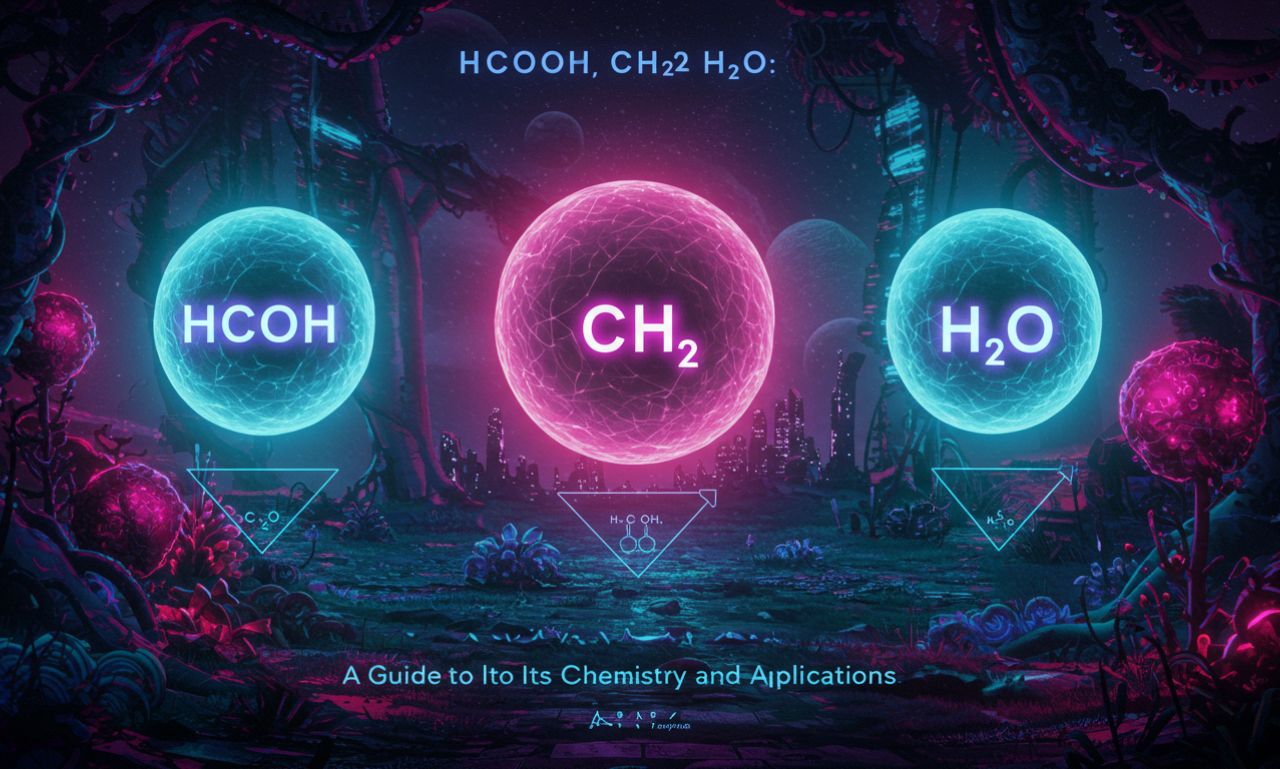The combination HCOOH CH2 H2O may appear cryptic at first glance, but it represents a fundamental interplay of organic and inorganic compounds often explored in chemistry. This formula encompasses formic acid (HCOOH), a methylene group (CH2), and water (H2O), all of which have vital roles in chemical reactions, industrial processes, and biological systems. In this article, we’ll explore the individual components of HCOOH CH2 H2O, their interactions, and practical applications, offering a well-rounded understanding of this intriguing combination.
What is HCOOH CH2 H2O?
To begin, let’s break down what each part of the formula HCOOH CH2 H2O stands for.
-
HCOOH is the chemical formula for formic acid, the simplest carboxylic acid.
-
CH2 refers to a methylene group, a common building block in organic chemistry.
-
H2O is water, the universal solvent and an active participant in many chemical reactions.
Together, HCOOH CH2 H2O may not represent a single molecule, but rather a combination of reactants or functional groups that can participate in larger chemical transformations, such as hydration reactions, oxidation processes, or synthetic pathways.
Formic Acid (HCOOH): Structure and Properties
HCOOH, also known as methanoic acid, is the simplest member of the carboxylic acid family. It consists of a single carbon atom bonded to a hydrogen atom and a carboxylic acid group.
Key Properties of HCOOH:
-
Molecular weight: 46.03 g/mol
-
Boiling point: 100.8°C
-
Appearance: Colorless liquid with a pungent odor
Formic acid is found in the stings of ants and is a natural product in various metabolic processes. It’s widely used in the leather, textile, and rubber industries, and also serves as a preservative in livestock feed.
The Role of CH2 in Organic Chemistry
The CH2 group, known as the methylene bridge, is a highly reactive fragment in organic molecules. It frequently appears in alkanes, alkenes, and carbon chain compounds.
Functions of CH2:
-
Serves as a connector between functional groups
-
Participates in hydrocarbon chain elongation
-
Acts as an intermediate in polymerization reactions
In the context of HCOOH CH2 H2O, the methylene group could be a part of a compound that undergoes transformation in the presence of formic acid and water.
Water (H2O): The Universal Catalyst
No discussion about HCOOH CH2 H2O would be complete without considering the vital role of water. H2O is not only a solvent but also a reagent in many chemical reactions.
Water’s Importance in Reactions:
-
Facilitates hydration and hydrolysis
-
Acts as a medium for acid-base interactions
-
Supports equilibrium in organic and inorganic systems
In combination with formic acid and CH2-containing compounds, water can initiate and drive reactions such as esterification or degradation processes.
Interactions Between HCOOH CH2 and H2O
When exploring the chemistry of HCOOH CH2, the focus is on reaction mechanisms that involve these three components. One possible scenario is a hydration reaction, where water reacts with a molecule containing CH2 and HCOOH groups to form alcohols or carboxylic acids.
Example Reaction:
A compound with a CH2 group adjacent to a carbonyl (like an aldehyde) can react with HCOOH and H2O, leading to the formation of more complex molecules such as hydroxy acids.
These kinds of transformations are important in synthetic organic chemistry, pharmaceuticals, and biochemical pathways.
Applications of HCOOH CH2 H2O Reactions
Understanding how HCOOH CH2 behaves in different settings allows chemists to harness these reactions in various fields:
1. Industrial Chemistry
Formic acid is often used as a reductant in chemical processes. In the presence of water and reactive CH2 intermediates, it can drive green chemistry reactions that minimize hazardous by-products.
2. Environmental Science
Reactions involving HCOOH CH2 can be part of the breakdown of pollutants. In aqueous solutions, formic acid helps in oxidative degradation of organic waste, especially when methylene groups are present.
3. Biochemistry
Within biological systems, small carbon compounds like formic acid and CH2 fragments play essential roles in metabolic pathways, such as the formate cycle. Water, of course, is the medium for all biochemical reactions.
Laboratory Considerations and Safety
When working with HCOOH CH2 mixtures or reactions, safety is paramount:
-
Formic acid is corrosive; it must be handled with gloves and protective eyewear.
-
CH2 groups, depending on their chemical environment, may come from volatile compounds.
-
Reactions involving water and acids can be exothermic, so temperature control is essential.
Proper ventilation, storage, and waste disposal procedures should always be followed.
Conclusion: The Significance of HCOOH CH2 H2O in Chemistry
The combination HCOOH CH2 H2O may not refer to a single compound, but it represents a meaningful convergence of vital chemical components. Understanding their individual characteristics and combined behavior offers insights into organic synthesis, environmental remediation, and biological activity. Whether used in academic research, industrial processes, or biochemistry, this trio holds significant potential in advancing chemical knowledge and innovation.
